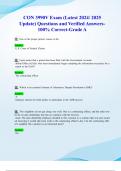Resume
Uitgebreide samenvatting Consumer Behavior 7th edition hoofdstuk 7 t/m 10 - Marketing (for premaster)
- Cours
- Établissement
- Book
Een uitgebreide samenvatting van de hoofdstukken 7 tot en met 10 voor de midterm van het vak Marketing (for premaster) van het boek Consumer behavior - Hoyer, Macinnis, Pieters. De samenvatting bevat ook voorbeelden (duidelijk herkenbaar) en marketing implicaties (duidelijk herkenbaar). Als aanvul...
[Montrer plus]













